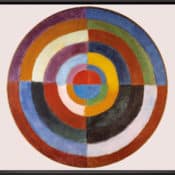Image "View of St. Germain" (1914), framed
Klee's "View of St. Germain" was created in direct examination of Cubism and shows him at the border for abstraction - landscape and houses are dissolved in graphic elements, which are closely related to one another, but the village remains clearly recognizable as such.
Original: Columbus Museum of Art, Ohio.
In the digital-Fine-art process, worked on the canvas of artists and handed it over to a wooden wedge frame. Framed in hand -made gallery. Limited edition 499 copies, with a certificate numbered on the back. Format 87 x 72 cm.
Contact Seller966XXXXX
Buy Artwork
by his artists' colleagues, he was only called "the unique": Paul Klee (1879-1940), like no other, shaped the understanding of modern art. With his mosaic -like composed works, he created a completely new style.
The German-Swiss Klee, born in Bern in 1879, turned out to be a double talent early on: his drawing skills, but also his violin playing both a musical and an artistic career. Klee chose art and went to the Munich art academy, where he studied with Franz von Stuck, among others.
But less the academic studies than an extensive study trip with friendly artists to Italy helped him to develop an independent style. Ingrade, symbolic representations full of wit and humor become his trademark. Usually it is only small formats, often only drawings that enchant the viewer.
- Abstract Art
- Geometric Abstraction
- reproduction
- Limited Edition
- Abstract
- Architecture & building
- Landscape








